35WhelenAI
WKR
- Joined
- Nov 20, 2021
- Messages
- 2,150
Do it with the same lot of cases and establish a baseline each time you change case brands and it's not a crapshoot.
Follow along with the video below to see how to install our site as a web app on your home screen.
Note: This feature may not be available in some browsers.
Yep, I just have a standard micrometer that measures to the nearest .5 thousandths. I measured 4.5/1000 to 5.5/1000. Still one order of magnitude different than yours.Negative. A dial micrometer to 4 decimal places. .0004-.0006. Your measurements are quite a magnitude greater than what you should be measuring. 45/1000-55/1000 is what you are calling your measurement, I'm talking for 4/10000-6/10000. If you are measuring that much head expansion it's either a blade micrometer which is not capable of the accuracy or way overboard. You must use a dial micrometer. Different than what you typically use for reloading.
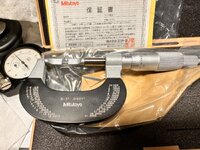
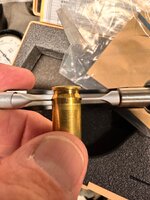
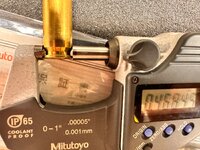
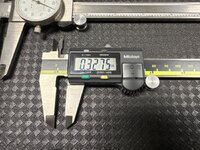
From what I’ve heard/understand it’s filling space in the chamber with something that’s not easily compressed.So is the spritz of water cooling the brass or filling space in the chamber?
Apologies on the unclear terminology. Micrometer or outside micrometer would have been better on my part. Ages ago I was introduced to it as a dial micrometer because the handle was dialed at the base to get the measurement.Micrometer or caliper?
View attachment 890426
What are you actually referring to as a dial micrometer?
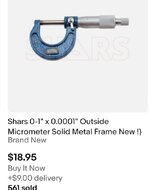
Wouldn’t you say it’s actually fun to see the case head measurements? I love to see in real time what the case is doing.It is a very good tool but most folks don't bring it up in conversation because they don't know about it and/or it takes a bit of work to do.
Water isn’t compressible so it’s filling space.So is the spritz of water cooling the brass or filling space in the chamber?
Maybe I didn't make it clear, but I certainly am not chasing velocity. Rather, I am seeking to know where excessive pressure is, so that I know where a safe range of charges is to use for further load development.The moral of this thread is don't chase velocity unless more than reasonably certain the pressure monitoring methods used indicate a load that's not over pressure.
What velocity were you getting @ book max? Barnes loading data tends to have max charges higher than other data I've found for the same bullet so be cautious.
I'm working on load development for my 7PRC same as you. However while I have H4831sc, I'm starting with H1000 using the 160LRX.
Have you actually seen a situation where case head expansion reaches an unsafe level before a primer flattens, or craters, or stiff bolt or an ejector mark? I surely haven’t.That comment wasn't directed at anybody in particular. Many people potentially could read this thread, and the few that say no need to worry, are giving bad advice and it's due diligence to state it plainly. Looking forward to hearing how things go as you continue working on the load.
